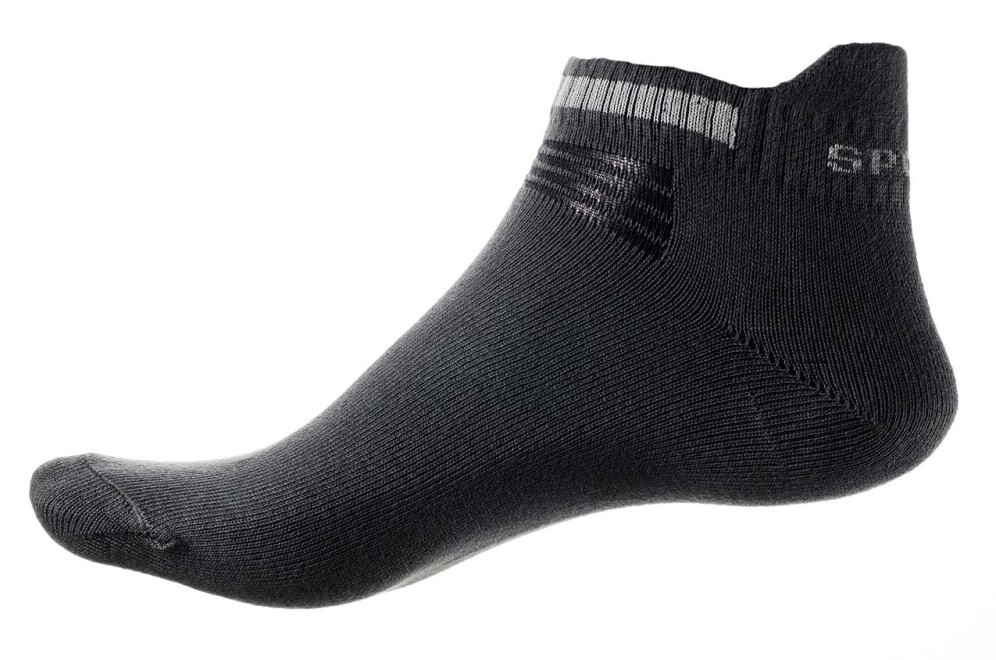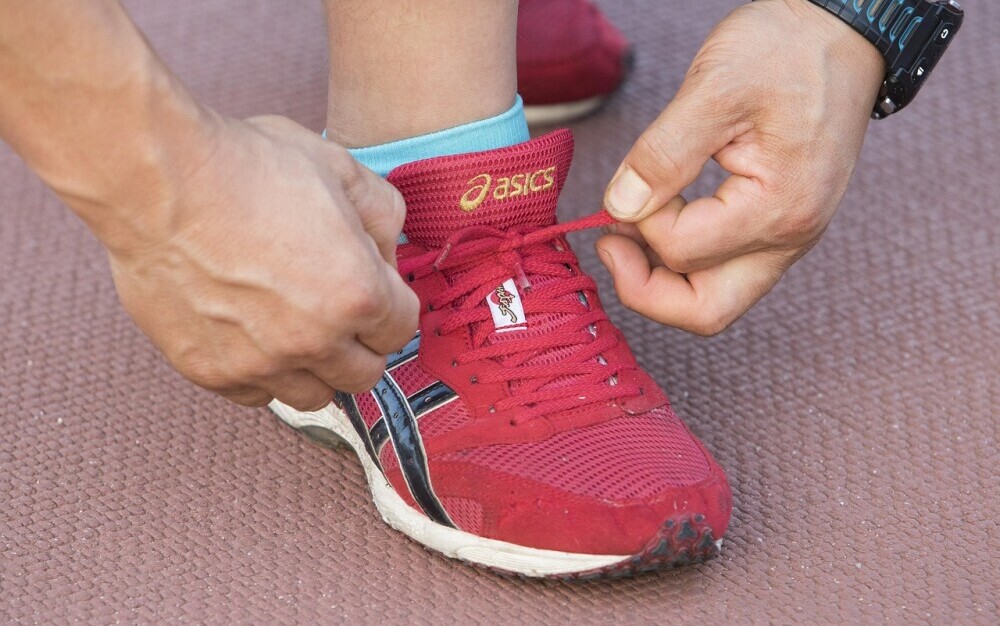Running can significantly contribute to a healthier lifestyle, offering numerous physical and mental health benefits – and it’s FUN. For beginners and seasoned runners little details count. One detail that might be overlooked is the type of socks you choose. Running socks might seem simple, but they can make a huge difference in comfort, performance, and overall foot health. In this article I discuss the importance of wearing the right type of socks.

Getting Started: Why Running Socks Matter
When you first start running, every element of your gear plays a part in keeping you comfortable and injury-free. Running socks are designed to help manage moisture, reduce friction, and prevent blisters.
For beginners, a small detail like the quality of your socks can seem unimportant, but it makes a really big difference. Choosing the right pair means fewer stops for adjustments, less worry about discomfort or skin injury and a more enjoyable run.
The basic purpose of running socks is to shield your feet from the repeated impact of foot strikes during your run and skin injuries. Socks designed especially for running tend to have extra properties such as cushioning in key areas such as padded heels to reduce shock.
Additionally, they are made from moisture-wicking fibers that help keep your feet dry, maintaining temperature and preventing blisters. This means that even if you put in several miles as a beginner, your feet stay more comfortable and injury free throughout your workout.
Benefits of Using Running Socks for Beginners
One of the main benefits of running socks is moisture management. Running socks usually use synthetic materials that draw moisture away from your skin. Dry feet can make the difference between a relaxed and comfortable run and one cut short by painful blisters.
Regular cotton socks hold in moisture increasing friction. They also tend to shift and bunch up creating pressure ridges. These conditions can and usually do lead to blisters. Never wear cotton.
Running socks typically have extra cushioning in the soles and around the heel improving comfort. This added padding can help reduce the impacts and vibrations from your stride. The more cushioning your feet have, the less likely you are to suffer from repeated stress on sensitive areas.
Many running socks offer arch and ankle support, which can help stabilize your foot as it lands and pushes off from the ground. This small benefit works together with your running shoes to prevent overuse injuries.
For anyone starting out, running socks offer a handy set of benefits. They help regulate temperature, manage moisture, prevent blisters and add that bit of extra comfort. Even if you’re new to running, investing a bit more in your socks will save you from a host of issues that accumulate over time.
Is It Okay to Wear Running Shoes Without Running Socks?
No. Some runners might consider skipping socks but going without socks is not wise, especially if you’re just getting into running. Running shoes are designed to work with socks, as the sock creates a layer that reduces friction between your foot and the shoe, minimizing the risk of blisters.
At the very least, even if you pick a pair of running shoes that seem comfortable at first, pairing them with dedicated running socks usually provides better moisture-wicking properties and shock absorption. So, while some seasoned athletes might experiment with sockless running, for beginners, it’s safer and more effective to wear proper running socks.
High Socks vs Low Socks: Which Option Works Best?
The answer isn’t one-size-fits-all and depends on personal comfort, the weather, and how the sock interacts with your shoe. High socks tend to provide more coverage, offering extra support in the calf and protecting against abrasions from the shoe rubbing against your skin.
Some beginners might prefer low socks because they give a sense of freedom and reduce potential heat build-up in warmer conditions. Conversely, if you run in cooler weather or need added support or compression for your lower legs, high socks might be the right pick.
The key is to balance support with comfort. Trying out different lengths during practice runs can help you decide what works best for your running style and environment. There are options available that fall between the two extremes, giving you some of the benefits of both without feeling too constricting.

Determining the Need for Compression Socks
Compression socks are designed to gently squeeze the legs, these socks can help improve blood flow, reduce muscle vibration, and give recovery a boost. While not every beginner may need compression socks, they are worth considering if you often feel fatigued or if your legs experience cramps or joint soreness after running.
Compression technology in socks works by providing graduated pressure that supports the veins and muscles improving circulation. If you notice that your legs feel particularly heavy after a run or if recovery times are longer than expected, it might be a sign that compression socks could help you.
In most cases, a regular pair of running socks is enough for beginners. However, if you are a beginner or start increasing your distances and find that fatigue is interfering with your progress, consider compression socks. I can’t think of any circumstance where compression socks would not improve your running experience.
Before making the switch to compression socks, it’s a good idea to assess your running habits and listen to your body. Asking a specialist or trying a pair of well-reviewed compression socks can make a difference.
Why Some Think Elite Runners Don’t Wear Socks
Have you heard or read the persistent myth that professional runners sometimes don’t wear socks because they believe it improves their performance. In reality, most top runners rely on high-tech, high-quality socks for the same reasons beginners do – comfort, cushioning, and moisture management.
Pro runners typically have access to gear developed with the latest technologies and materials. Their socks are designed to be incredibly lightweight, fit like a glove, and minimize irritation during high intensity running. The general consensus is that socks play an important role in any runner’s kit.
Elite runners have highly refined routines that include careful attention to every detail of their equipment. This includes the type of socks they wear, making them integral to their performance rather than a mere accessory. For beginners and all runners, following this practice can help you build a solid foundation in preventing common running issues like blisters and foot fatigue.

Extra Tips to Get the Most Out of Your Running Socks
Consider rotating your sock collection so that you always have a fresh pair for each run. This not only helps maintain hygiene but also extends the life of your socks. Washing them properly and allowing adequate drying time can keep them in optimal condition.
It is also very important to pay attention to details like sock fit and fabric type. Different activities might call for varied levels of cushioning and support, find what works best for you. If you’re ever uncertain, ask local sports stores or fellow runners for their thoughts. The advice you gather, combined with a little trial and error, can steer you toward that perfect pair of socks.
Wrapping Up Your Sock Strategy for Running
As a beginner, you should view running socks as more than just a piece of clothing. They are a vital part of your running gear that significantly impacts your overall experience.
With proper support and comfort on your feet, you build more confidence in each step you take. These extra steps can turn your basic routine into a truly next-level workout experience, as every element of your gear contributes to a smoother, more enjoyable run. With every stride, your attention to detail helps pave the way for ongoing success.
Pairing the right socks with well-fitting shoes and effective training routines can pave the way for better performance, a more pleasant running experience and healthier, fitter you. When you find a particular pair that keeps your feet dry and comfortable, stick with it and keep running.


Really helpful post—this is one of those things that seems minor until you’re a few miles in and realize how big a difference the right gear makes! I used to think any regular athletic sock would do, but once I switched to proper running socks, I noticed a big improvement in comfort and blister prevention.
I’m curious—do you think there’s a specific sock thickness or material that works best for beginners, especially those running in hot vs. cold climates? Also, how important is the fit around the arch and heel for support during longer runs?
Great topic—sometimes it’s the small upgrades that have the biggest impact on a beginner’s running experience.
Hi Tommy,
I do think that a medium thickness is best for beginners. Even in hot weather when ultra-thin might seem like the best choice to keep cool, I still recommend medium socks. This is because when someone is just beginning to run, the emphasis is on injury prevention. Medium thick socks provide some cushioning while still wicking moisture away from the skin keeping the feet cool and dry which reduces friction preventing blisters. So, this choice provides the best features while a new runners’ feet adjust to the new activity.
The fit around the arch and heel are very important – actually the entire foot. The sock needs to fit well and stay in place to prevent slippage and movement, which creates friction and bunching which creates a pressure ridge. These are the conditions that result in skin injury regardless of the length of the run. The sock should stay in place and remain flat. Regarding support, the shoe is the major factor, though compression socks can also provide some support in combination with a well suited and well fitted shoe.
Thanks for reading my article.
Kevin